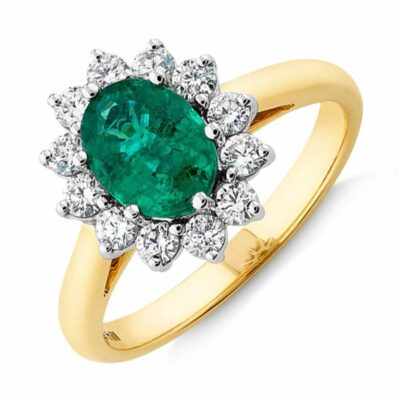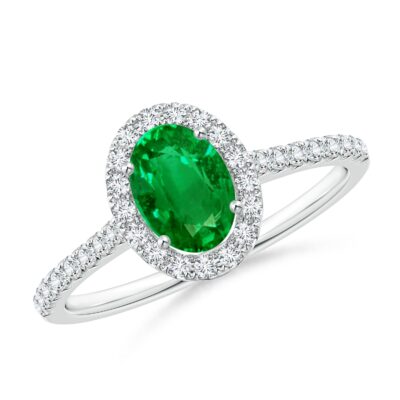Emerald
The name is from the old Greek word smaragdus, meaning green and was first mined in Egypt around 1500 BC. It is mined in many places most commonly in Columbia, Zambia, and Brazil and found in deposits of granite, almost 50% of all emerald are now thought to be from Columbia. Jaipur is one of the largest emerald cutting centres of the world. Emerald is always green however the deeper and richer the colour the more value it has. The romans connect the green lustre coloured stone to Venus the god of love.
All emeralds have inclusions and the rare few are much more expensive than diamonds due to its rarity. Emeralds are always oiled to fill the inclusion to strengthen and enhance their colour. It is one of the most difficult gem to cut due to the inclusions and difficult to set without having too much notice of the inclusions itself.

The gem is associated with loyalty, faithfulness and friendship, emeralds are ideal for both classic and contemporary style jewellery and are valued much the same way as diamonds; by cut, carat weight, clarity and colour. Emerald is the birthstone for month of May and often gifted for 55th wedding anniversary. Emerald is one of the 4 most popular gems with diamond, ruby and sapphire. It is a great investment in world of jewellery.

Emerald Care
Emerald is a soft delicate gemstone which is vulnerable to scratching, damage and erosion. Emerald jewellery needs special care and attention to ensure it is kept looking its best. Must be stored in a soft jewellery pouch or box to prevent scratching or damage from other jewellery. It should be cleaned thoroughly with water and dried with a soft jewellery cloth. Emerald jewellery should not be cleaned with diamond/gemstone solution, nor ultrasound cleaner and no contact with harsh detergents and chemicals such as bleach or chlorine should be avoided as they may cause erosion to the stone.